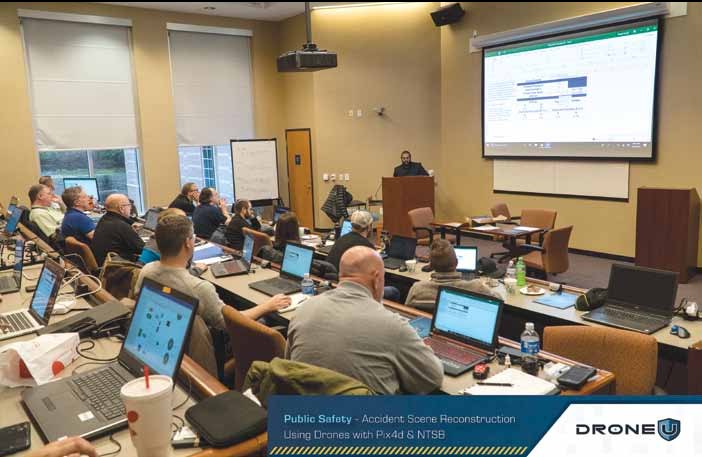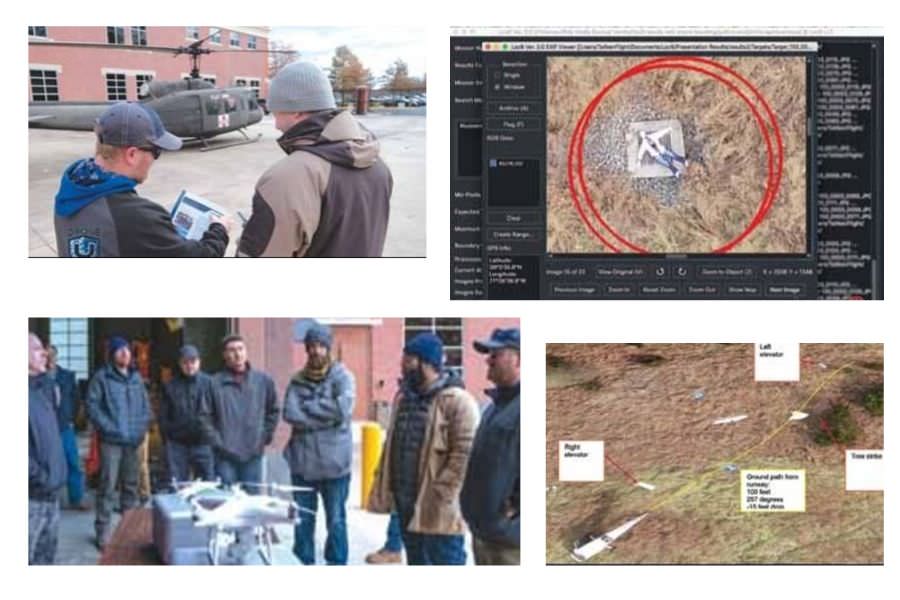Accident Scene Reconstruction using drone mapping adds another level of sophistication to an already complex and incredibly nuanced field. When legal decisions are being made based off your drone data, there is no room for any errors.
We, at Drone U have come up with a unique training that gamifies the entire learning experience.
Is There a Pressing Need for Better Drone Training?
Contrary to popular perception, rather than data acquisition, it is data processing that is the most time-consuming aspect of drone mapping. And surprisingly, many drone trainings fall woefully short in this regard.
And yet, there are other drone schools that attempt to teach students the nuances of drone processing without walking them through different acquisition strategies.
Recognizing these industry shortfalls, Drone U partnered with Pix4D to offer a carefully structured Accident Scene Reconstruction Training at the NTSB Training Academy.
What Did Students Learn Over the Course of This 3-Day Training?
Highlights:
- Students had the unique opportunity to map a Cessna plane crash and a helicopter plane crash
- Students completed 3 practical flight-based missions that gamified the learning experience
- Students were taught how to use synthetic aperture radar mapping to create orthomosaic maps for search and rescue operations
- Students learned the nuances of Loc8 software
Details:
Day 1
Classroom training commenced with processing training taught by Pix4D’s Angad Singh. Apart from discussing topics like scale constraints and merging maps, Angad explained how students can recreate crash scene with survey-grade precision.
Day 2
Flying real-life missions is certainly the best way to test a pilot’s skills. So, on Day 2, our students took to the skies to fly three carefully structured missions:
Mission 1 – Map a small general aviation fatal accident
In this mission, students:
- Generated a 3D model of the accident scene
- Exported deliverables to make measurements
Students were provided with a guide that detailed the individual flight paths for processing in Pix4D.
Mission 2 – Map a UH-60 Helicopter
- Conduct a thorough damage assessment
- Prep a maintenance plan for headquarters
Mission 3 – Map an area to look for missing “victim” and helicopter parts
In this last mission, Drone U students were asked to look for hidden mannequin and helicopter parts. Students were asked to use Loc8 software to analyze images.
Day 3
On Day 3, students learnt how to:
- Use different workflow techniques for achieving highest level of accuracy for 2D maps
- Clean up 3D models and surfaces for orthomosaics
To learn workflow, students processed different models and learned the importance of scale constraints in relative space. Further, a demonstration of a new search-and-rescue software wrapped up the final day of the reconstruction class.
How Can You Attend a Drone U Training?
Drone U’s unique training model that emphasizes education via practical experience resulted in increased engagement and retention. Further, healthy competition among students encouraged them to put in their best effort.
As is evident from our student testimonials, this approach certainly seems to be a winning one. We shall be conducting this same training again in spring. Check out our website for updates and information about future trainings. Hello all. My husband and I have been TTC for about 7 years. We recently started IUI fertility treatments, and the first step of that was for me to begin taking clomid. We have now had two IUI treatments, which means I have taken 2 rounds of clomid. I have shared my experience. So anyone who may be taking clomid as well can know what they may expect as side effects and know what to expect as they take this mediciation.
Become a Drone U Member.
Do not forget to subscribe and listen to Ask Drone U, the #1 drone podcast on iTunes!







Add Your Comment